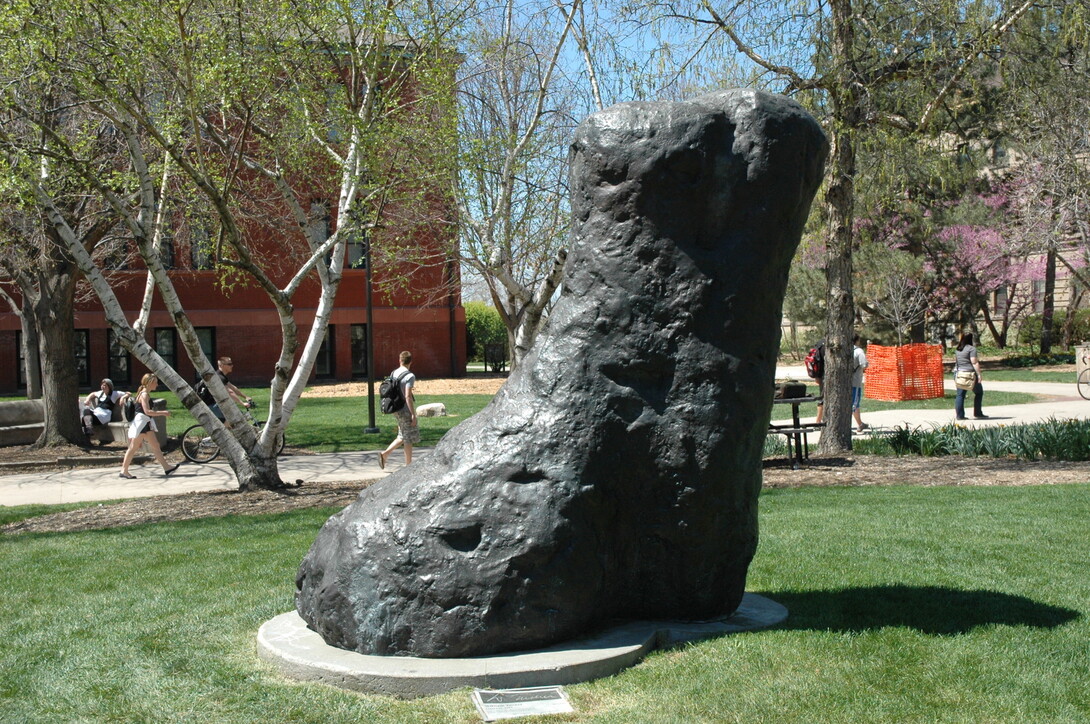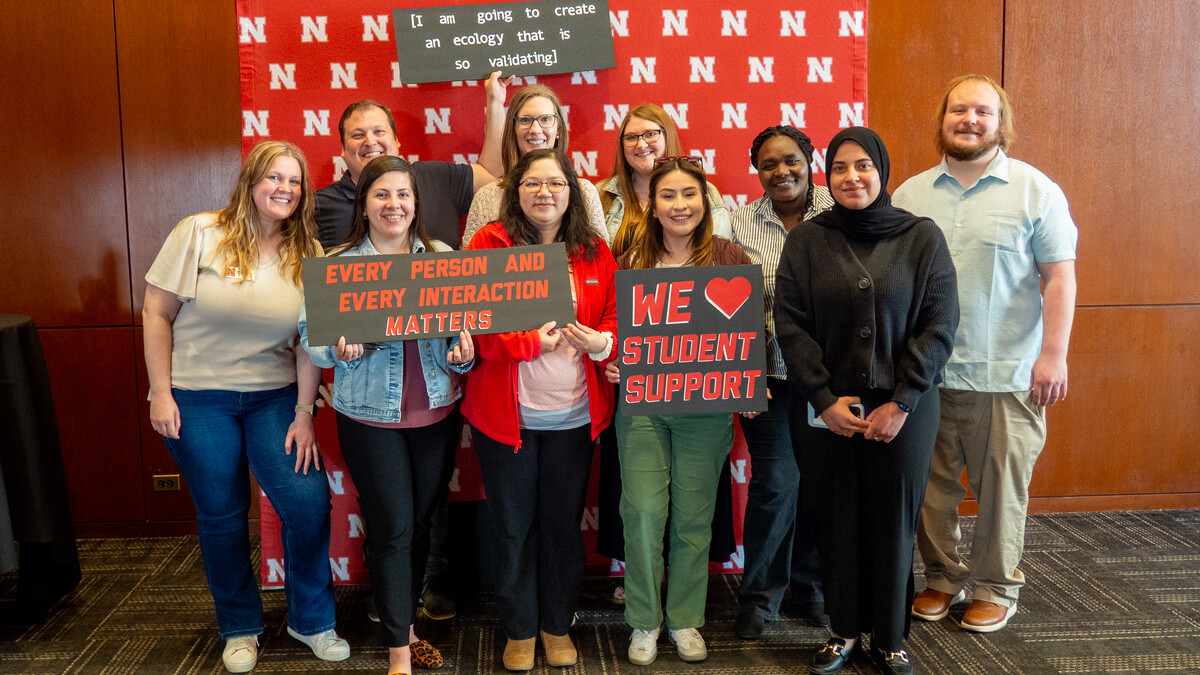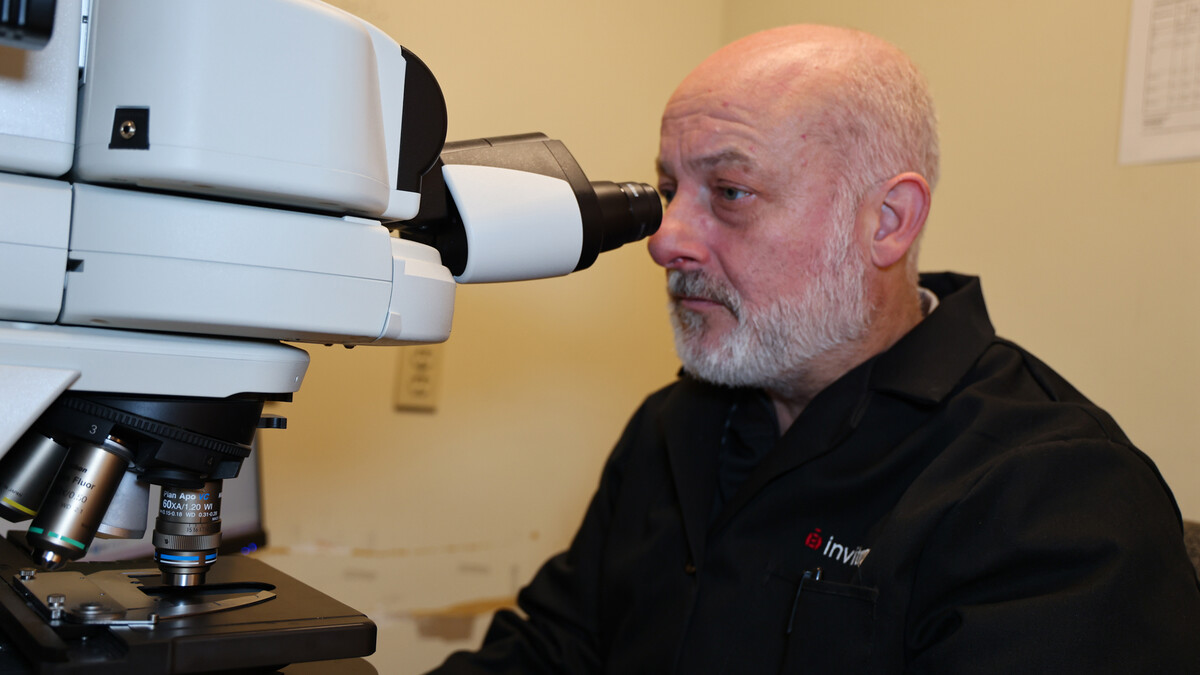
Spring is turning to summer and it’s beckoning us outside.
One way to exercise both body and mind is to take a stroll through campus, and learn a bit about some of the sculptures there. The Sheldon Museum of Art’s Outdoor Sculpture Collection on the University of Nebraska–Lincoln’s City Campus can provide a welcome respite while practicing social distancing.
This list is just a fraction of the collection, and more information regarding all outdoor works can be found on the Sheldon website. In fact, the Sheldon’s entire collection has been digitized and can be viewed entirely online.
Here, Nebraska Today highlights a few along a path that circles campus. Start the tour near Van Brunt Visitors Center, where Torn Notebook has welcomed all to campus.
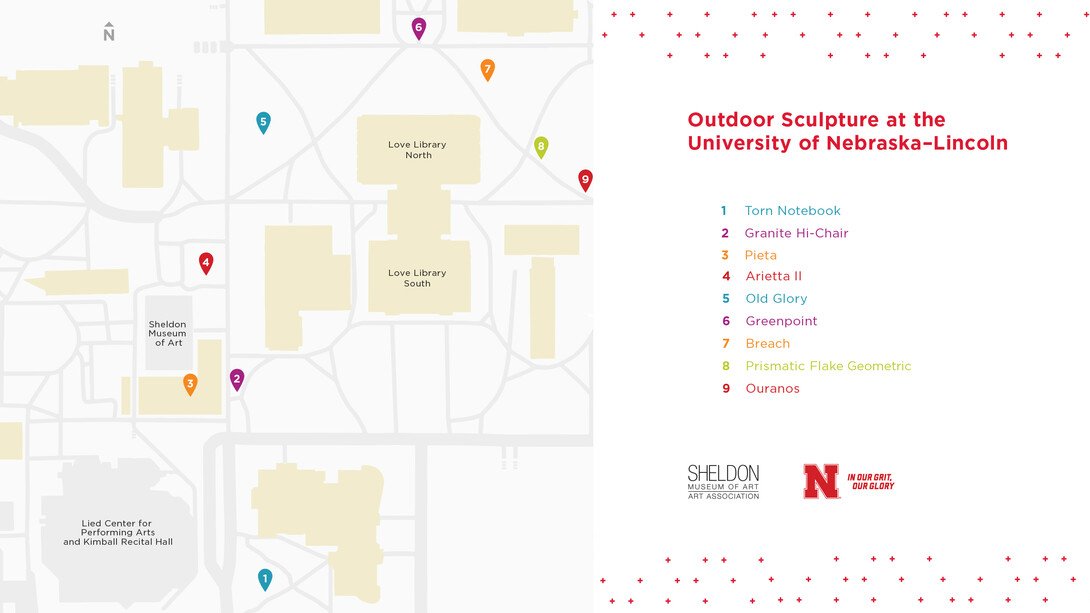
Torn Notebook
An icon on campus, this sculpture by Claes Oldenburg and Coosie Van Bruggen greets nearly every visitor to campus and is situated on Madden Garden, the greenspace outside the Van Brundt Visitors Center, where the university and Lincoln meet. It has served as a backdrop for thousands of visitor photos and even played host to a group of alpacas during a costume design class in 2017. It was installed in 1996.
Granite Hi-Chair
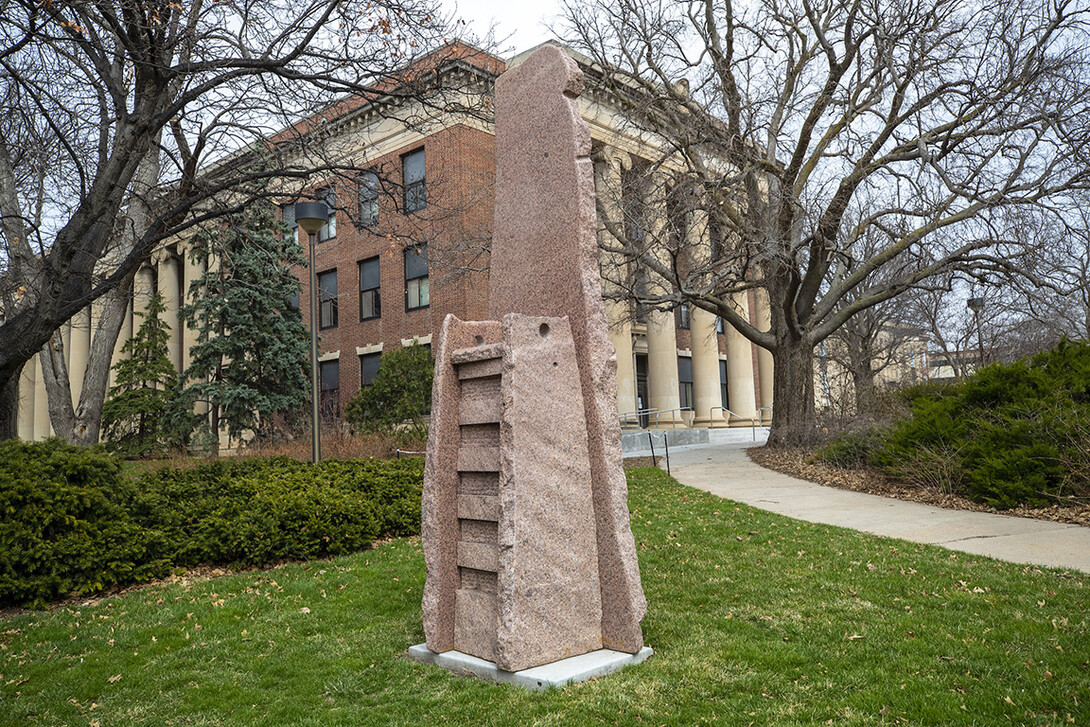
Walking north on 12th Street, walkers will see Granite Hi-Chair by Jesus Moroles. This sculpture was installed near the Sheldon in 2016. For Moroles, his use of granite combined both finished and raw stone to metaphorically address how humanity intersects with nature.
Pieta
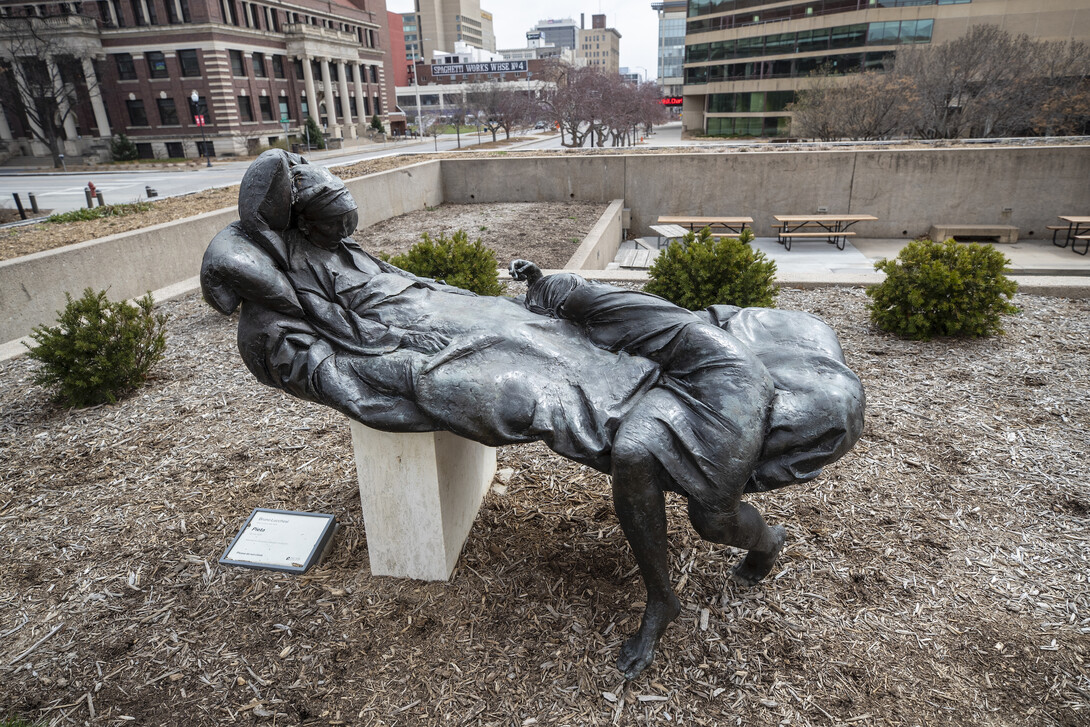
Named after one of Michelangelo’s most famous works depicting Mary holding and mourning Jesus after his crucifixion, Pieta, located south of the Sheldon, is a role-reversal by artist Bruno Lucchesi, as it depicts a child mourning a parent and was made in tribute to the artist’s mother who died in 1969. The contemplative bronze sculpture was placed in 1972.
Arietta II
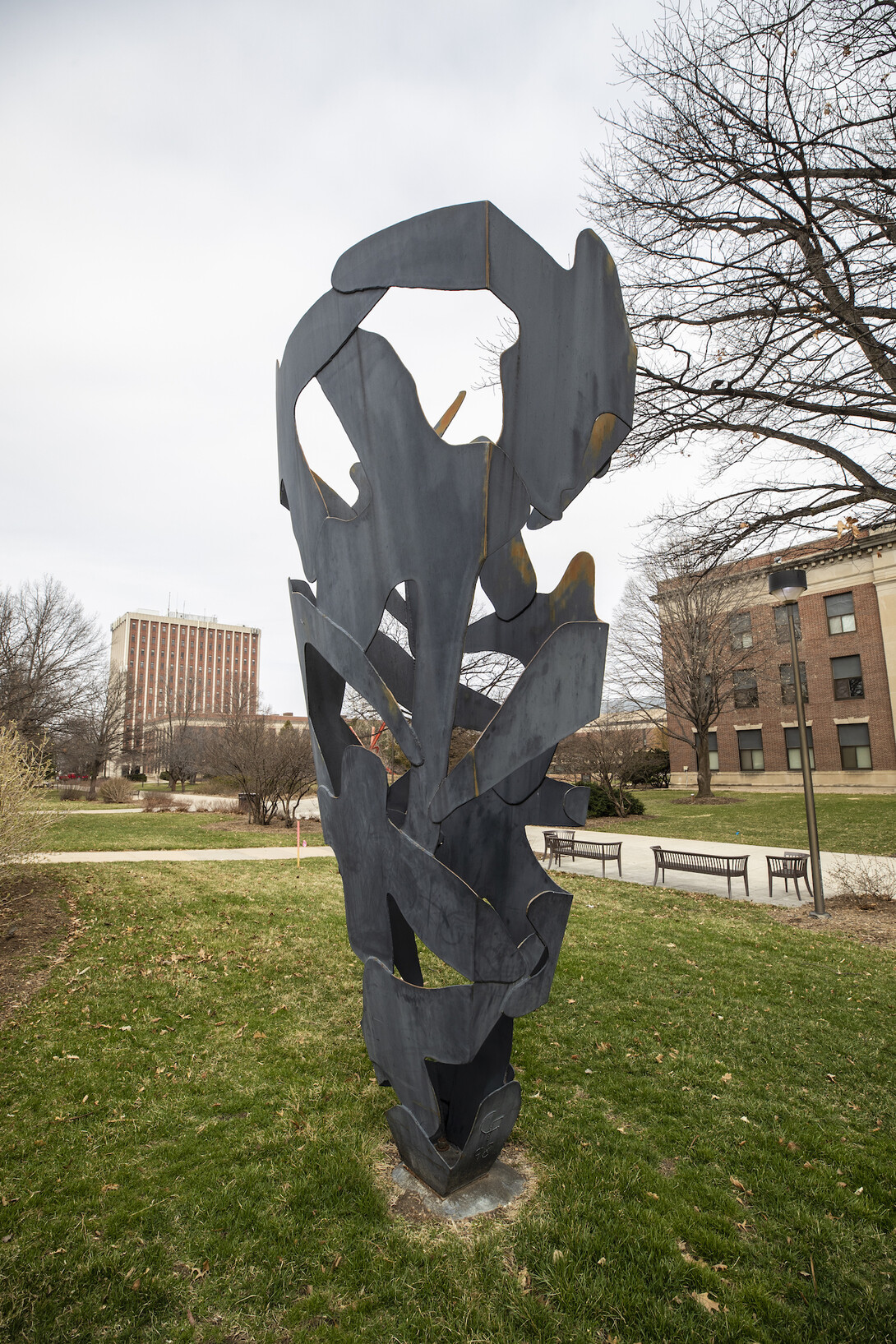
“Prehistoric people living along the Mississippi River in Iowa built Earth mounds in the shapes of animals,” Ferguson told the Daily Nebraskan in a 2016 interview. “I selected birds from these records because of their ability to lift off. I applied the birds to form the larger cone shape, a shape that can suggest the toe shoe of a ballet dancer. Both birds and dancers captivate us because of their defiance of gravity.”
Old Glory
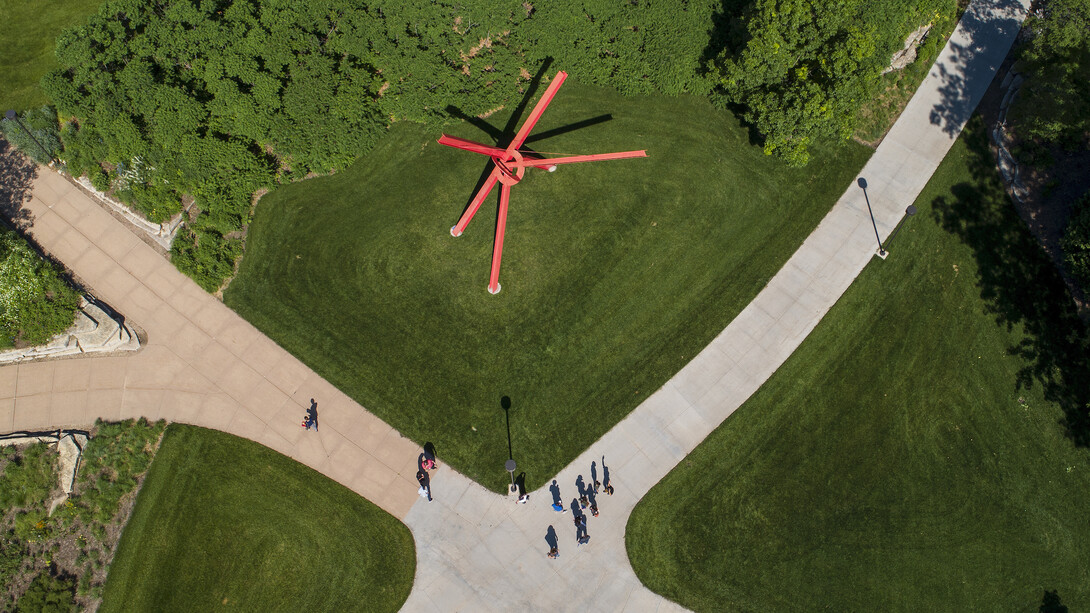
This large red sculpture of I-beams and metal by Mark Di Suvero was installed on campus in 1987. Laying below it, against a blue sky with scattered clouds, it represents the American flag. A popular campus myth says a person can also find the shape of every letter of the English alphabet, depending on the viewer’s vantage point, so spend some time walking around it. Can you find every letter?
Greenpoint
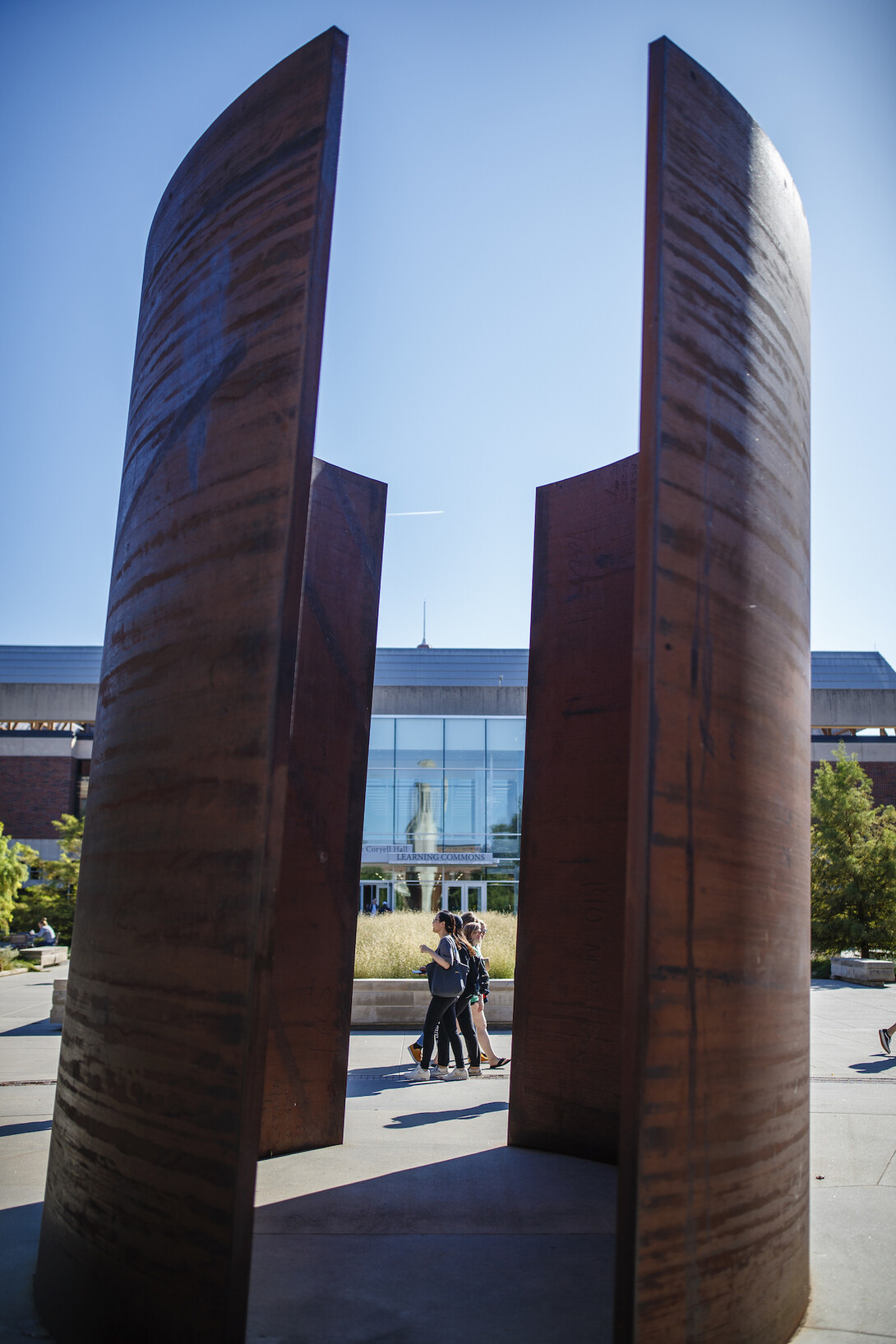
Breach
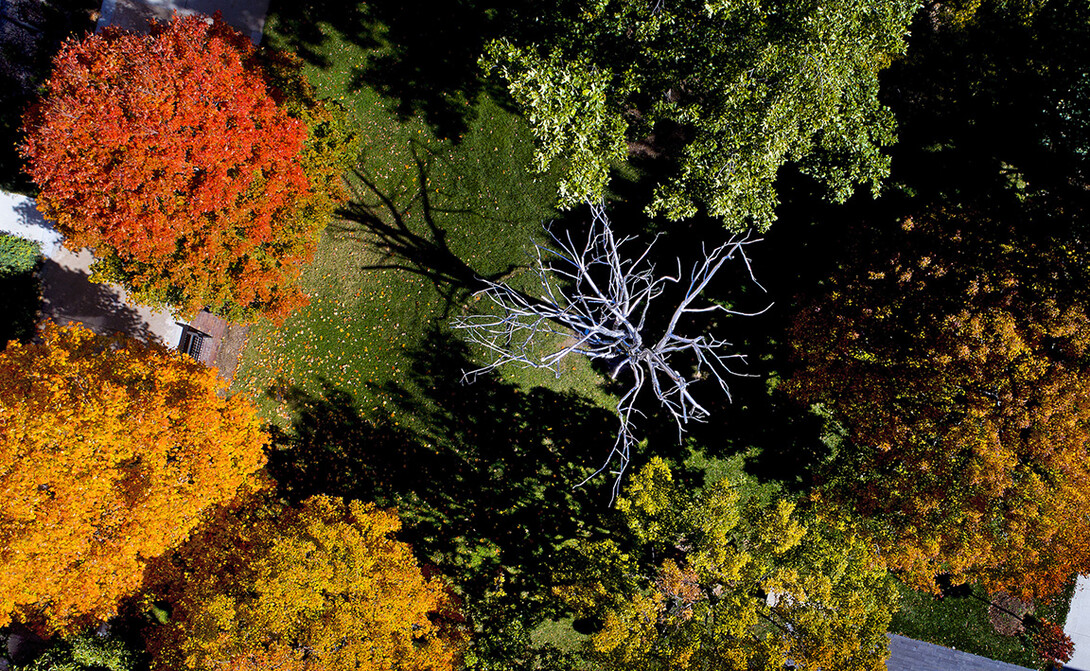
This stainless steel sculpture of a bare tree often blends into the campus forage around it. Its artist, Roxy Paine, uses art to explore the interactions of nature and artifice in our environment. Breach was installed on campus in 2004 in Donaldson Garden, south of Andrews Hall. The tree stands 40 feet high, and is “somewhere between life and death,” Paine told the Journal Star at its installation.
Prismatic Flake Geometric
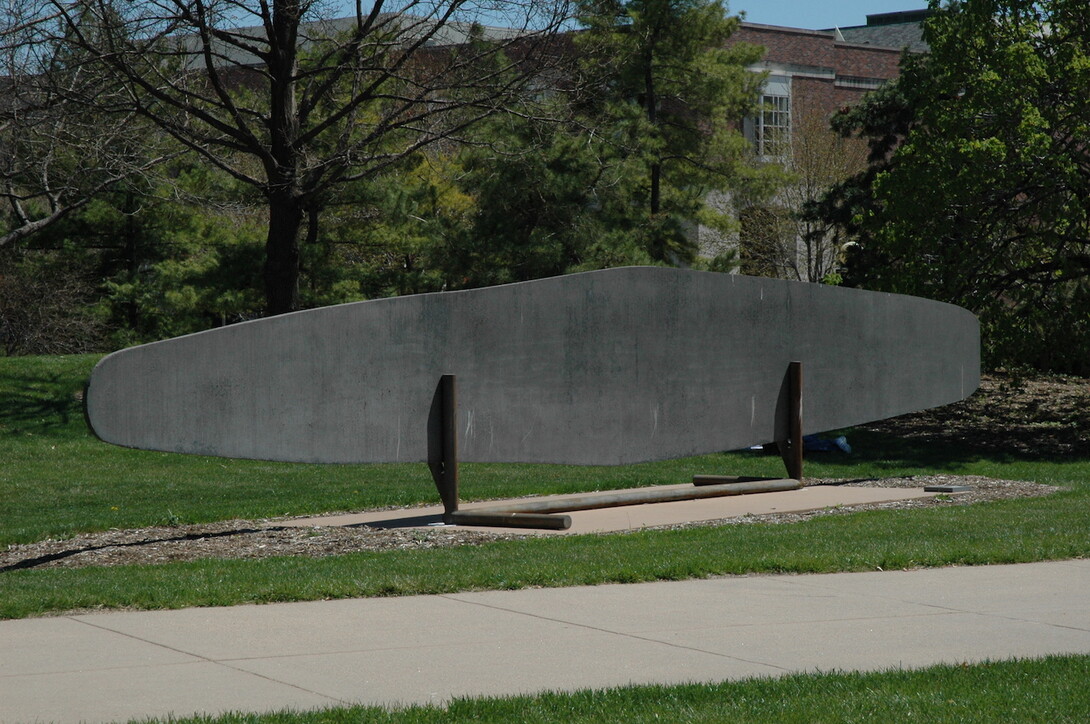
This piece, made of granite, steel and concrete, measures more than 35 feet long. Some say they see a surfboard or a boat, but it is a representation of an American Indian tool by Michael Heizer. Heizer’s father was an anthropologist, a fact that inspired the work. It was placed on campus in 1991.
Ouranos
